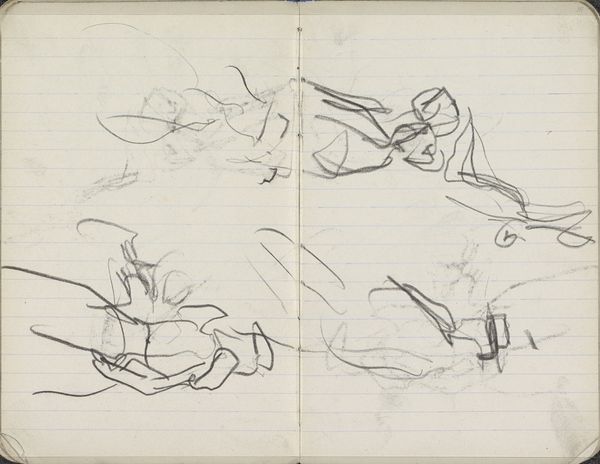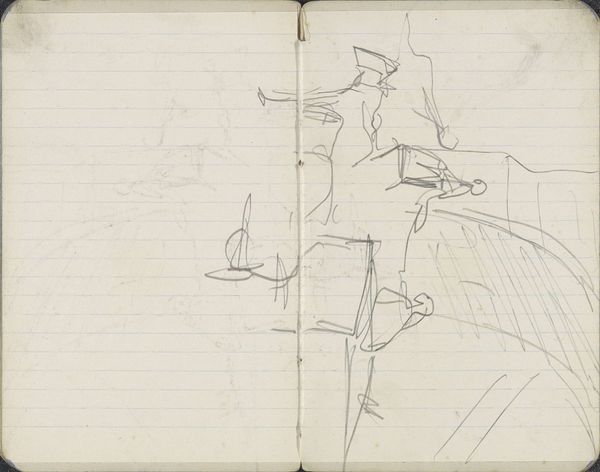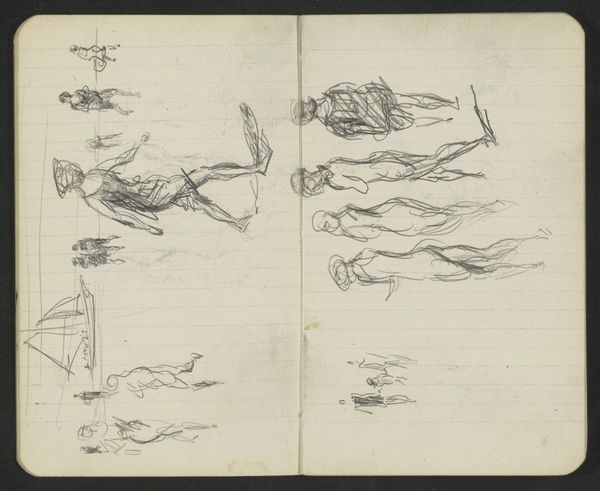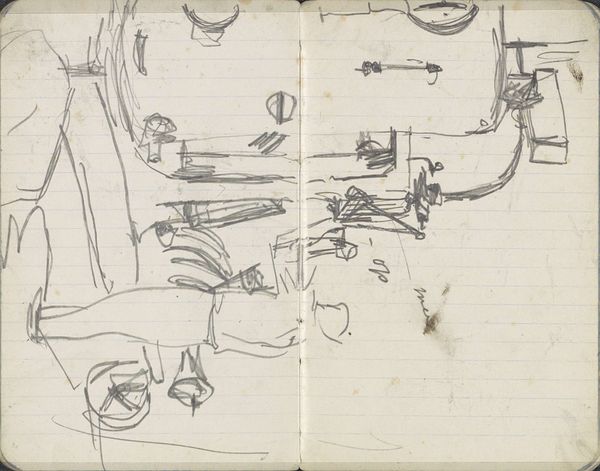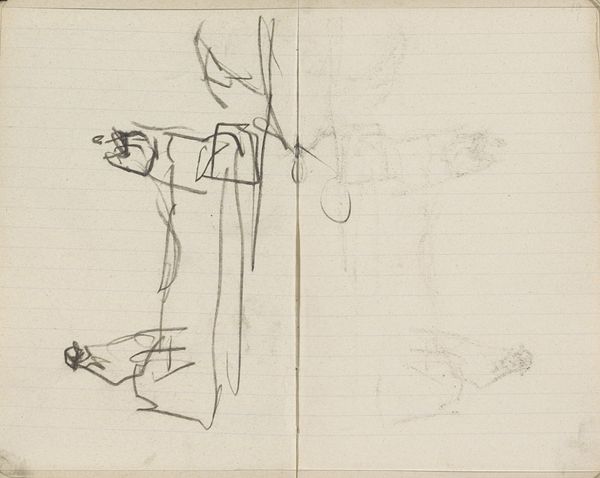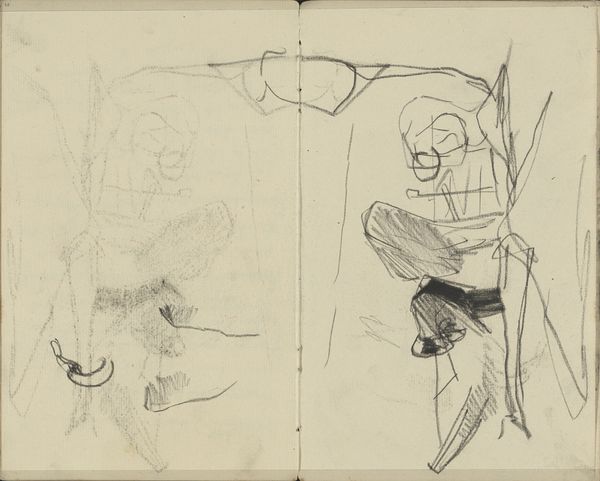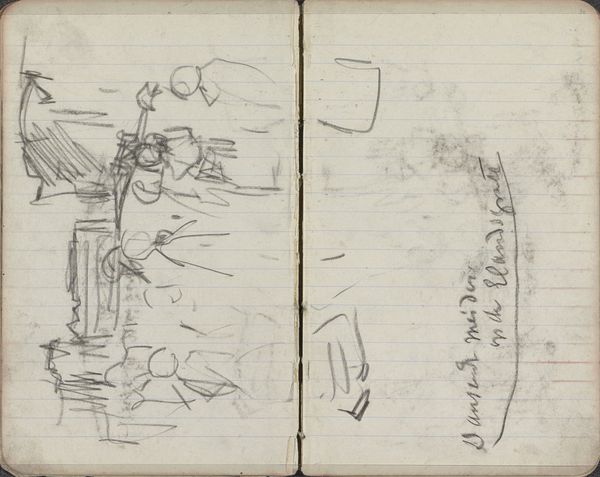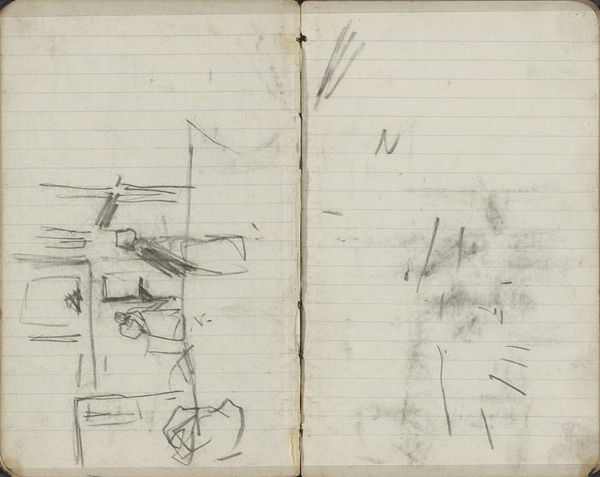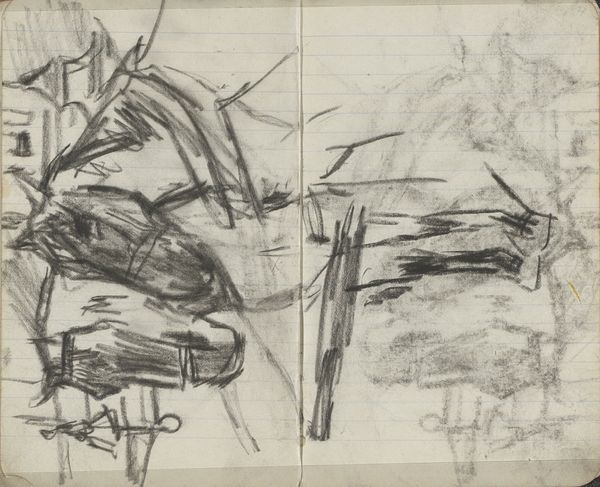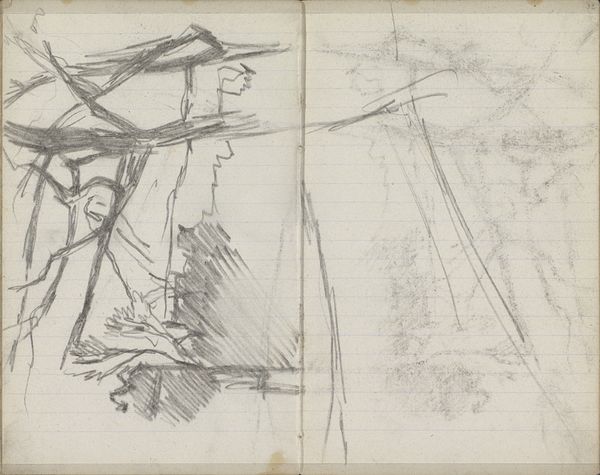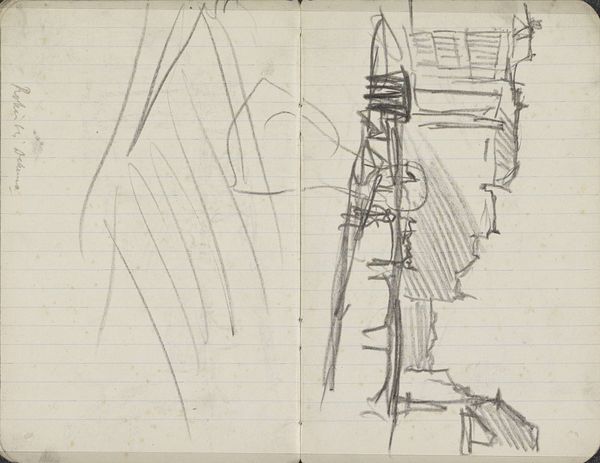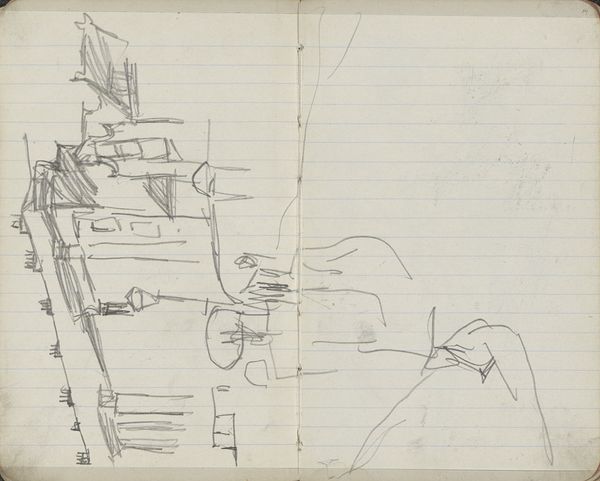
Copyright: Rijks Museum: Open Domain
Editor: Breitner's "Studieblad met sleperswagens en figuren," a pen and graphite drawing from around 1900, strikes me as incredibly raw and immediate. It's a cityscape, but almost abstract in its hurried lines. What catches your eye when you look at it? Curator: What grabs me is precisely that "hurried" quality you observed, the visible labor of the hand. It is less about the final product and more about the artistic process. How does the mass production of industrial elements juxtapose with the free-flowing nature of the graphite on paper? We see the artist working through an idea, a fleeting moment captured not in polished oil, but in the immediacy of line. Consider, too, the socioeconomic implications: What were the conditions of labor that enabled this snapshot of urban life? Editor: So, you’re focusing on the actual making and the environment that enabled that? The materials and their inherent qualities? Curator: Precisely. This isn’t just about representation. What kind of paper was it? Where did it come from? Who made the graphite, under what conditions? Breitner is using relatively inexpensive materials – these sketches were, likely, exploratory tools and not high-status objects. Does this casual nature impact the final work, its aesthetic effect? What are the material constraints on his labor? Editor: I never really considered the *making* of the art in such depth, thinking about the socioeconomics tied to it. The low cost and common availability allowed him to go out and just *make* rather than be restrained to the studio, maybe. Curator: Indeed. The materials enabled a different kind of art, raw and real. They aren’t just neutral tools, they have their own biographies which inevitably impact the aesthetic result. Editor: This has certainly shifted my perspective, thinking about the process itself, the act of creation as a form of labor tied into material production, that shaped the final image, not just the final result. Thank you!
Comments
No comments
Be the first to comment and join the conversation on the ultimate creative platform.


